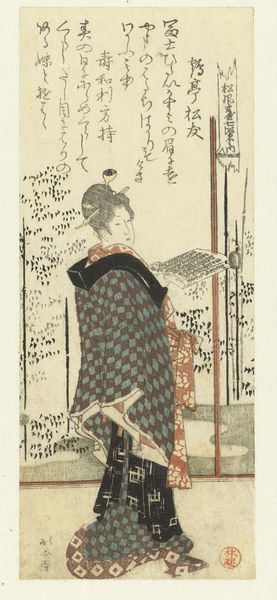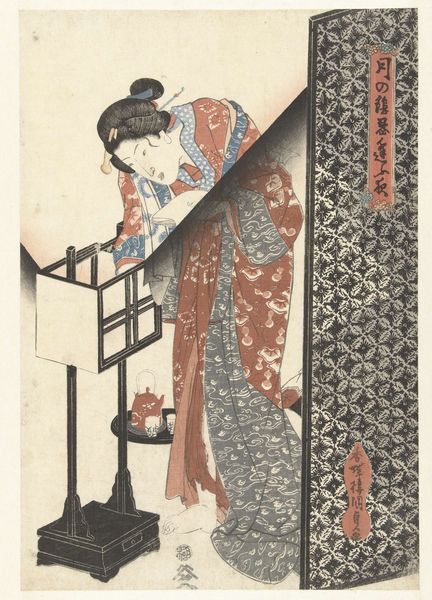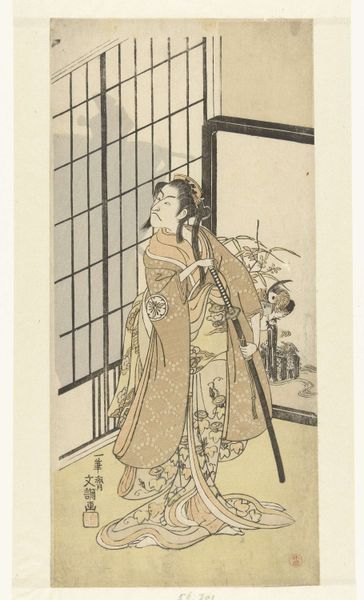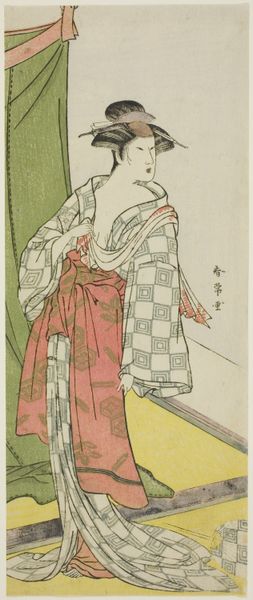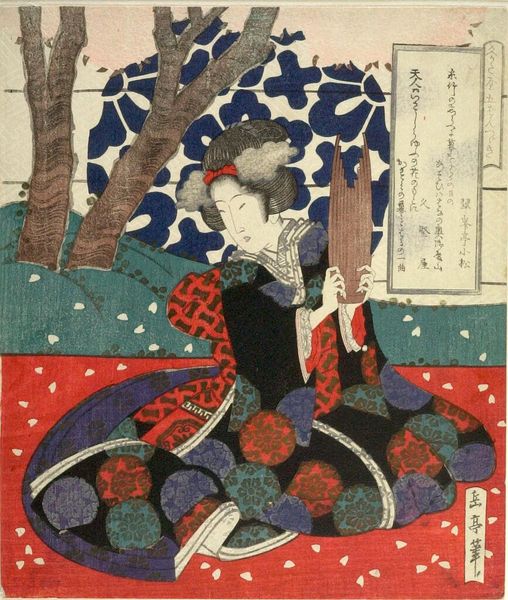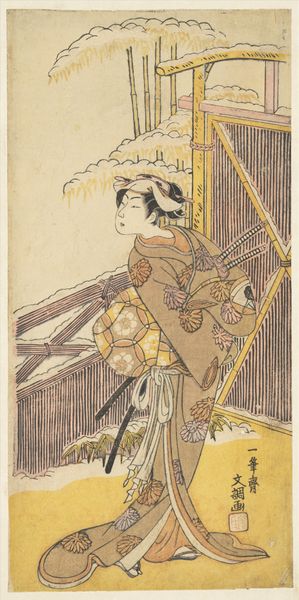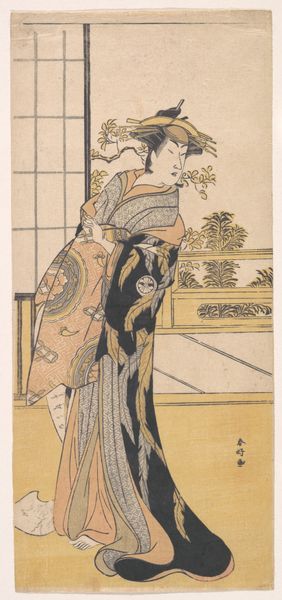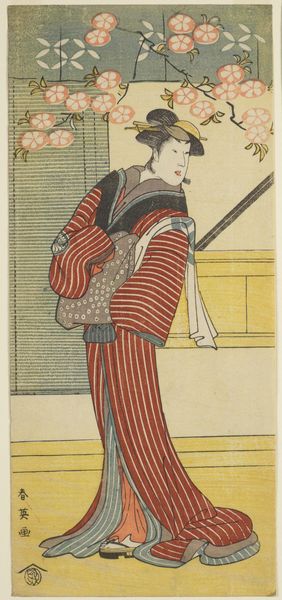
print, paper, woodblock-print
#
portrait
# print
#
asian-art
#
landscape
#
ukiyo-e
#
figuration
#
paper
#
woodblock-print
#
line
#
watercolour illustration
Dimensions: height 201 mm, width 84 mm
Copyright: Rijks Museum: Open Domain
Curator: Welcome. We're looking at "Vrouw met rijstwijnkopje", or "Woman with Rice Wine Cup," a woodblock print by Katsushika Hokusai, dating from around 1800. It’s currently held in the Rijksmuseum. Editor: It's a very gentle image. The colour palette is restrained, almost muted, and it exudes a kind of quiet, domestic elegance. Curator: Hokusai was, of course, a master of Ukiyo-e, "pictures of the floating world." His woodblock prints provide an intimate look at Japanese life and culture during the Edo period, and consider the way in which it shaped his creative process. Here we see a woman, elegantly dressed, holding a rice wine cup. Note how her pose directs her gaze and the viewer's upward. What can this teach us? Editor: It certainly points to the hierarchical nature of that society. The emphasis placed on representing this woman implies not only a respect for her gender within that era, but for the position women occupied. There is a delicate layering of labour and refinement shown here, it's also apparent in the creation of this very object. The print itself would have demanded a specialized craft with skilled artisans involved in its production. Curator: Precisely. And consider the dissemination of such prints. They were commodities, reflecting the rise of a merchant class with the leisure time and disposable income to purchase these artworks. The rice wine itself represents that which has undergone labour-intensive refinement as well. What social scripts is Hokusai presenting his patrons with? Editor: I find the presence of text so beautifully integrated into the design. It blurs the boundary between image and text, high art and popular culture. I imagine there must've been very precise coordination in their workshop, from initial concept to the final sale. Curator: Absolutely, and those factors ultimately shape how we perceive and assign value to such objects. This single artwork carries layers of cultural and social history within its very fibres. Editor: This piece truly encourages us to appreciate both the artistic skill and the broader context of its creation. Thank you.
Comments
No comments
Be the first to comment and join the conversation on the ultimate creative platform.
